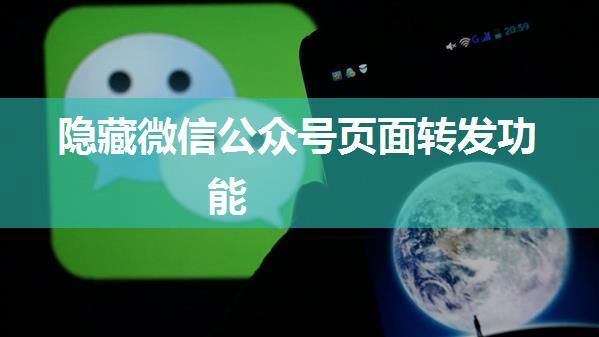
I'd be happy to help you with that! ??Hiding the WeChat Public Number Page Forward and Backward Function
As a developer, you may want to customize the behavior of your WeChat public number page by hiding certain features. One such feature is the forward and backward buttons at the bottom of the page. These buttons allow users to navigate between pages or go back to the previous one.
To hide these buttons, we can use JavaScript to manipulate the WeChat environment. Specifically, we'll be using the `WeixinJSBridge` API provided by WeChat.
Understanding the WeChat Environment
Before we dive into the code, let's quickly review how the WeChat environment works:
1. When a user opens your public number page, WeChat loads the page and creates a JavaScript context for it.
2. The `WeixinJSBridge` API is available in this context, allowing you to interact with the WeChat environment.
Hiding the Forward and Backward Buttons
To hide the forward and backward buttons, we'll use the `WeixinJSBridge` API to remove them from the page. Here's an example code snippet:
```javascript
```
In this code, we first get a reference to the `WeixinJSBridge` object using the `WeixinJSBridge` variable. Then, we define a function called `hideButtons()` that removes the forward and backward buttons from the page.
To call this function when the bridge is ready, we use the `bridge.call('hideButtons')` method. This will execute the `hideButtons()` function once the WeChat environment is fully loaded.
Caching and the Forward Button
Now, let's talk about caching. When you navigate between pages in your public number, WeChat caches the previous page to allow for smooth navigation. However, this caching can sometimes cause issues when trying to hide the forward button.
To avoid these issues, we can use the `window.location.replace()` method instead of `WeixinJSBridge.call('hideButtons')`. This method replaces the current URL with a new one, effectively removing any cached pages.
```javascript
```
In this example, we use `window.location.replace()` to replace the current URL with a new one. This will remove any cached pages and prevent issues with hiding the forward button.
Conclusion
Hiding the WeChat public number page forward and backward buttons can be achieved using JavaScript and the `WeixinJSBridge` API. By removing these buttons, you can customize the behavior of your public number page to better suit your needs.
Remember to use `window.location.replace()` instead of `WeixinJSBridge.call('hideButtons')` when dealing with caching issues. This will ensure that your code works as intended and provides a smooth user experience.


